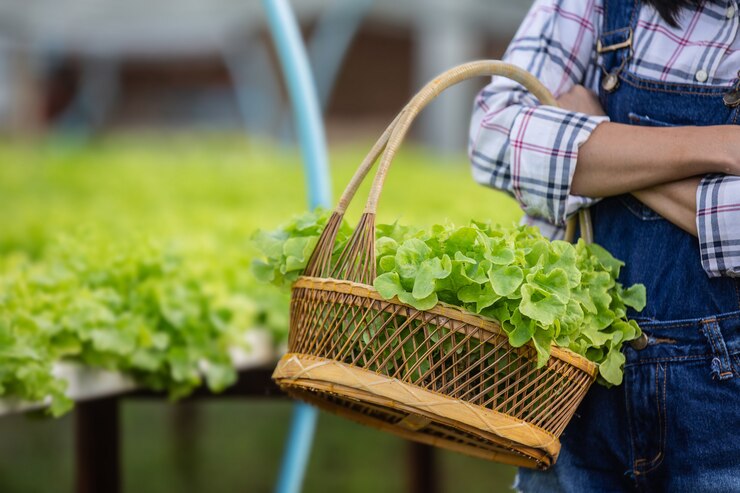The rhythmic hum of traffic, towering buildings scraping the sky, and endless stretches of pavement – these are the hallmarks of modern city life. While urban living offers undeniable convenience and excitement, it can also leave us yearning for a connection with nature. Enter urban farming, a movement that’s transforming concrete jungles into vibrant green spaces, one window box, rooftop garden, or reclaimed lot at a time.
More Than Just a Hobby: The Allure of Urban Farming
Urban farming is more than just a quirky trend. It’s a way to reconnect with where our food comes from, cultivate a sense of community, and create a more sustainable future for our cities. Here’s why you might want to consider joining the urban farming revolution:
- Fresh, Local Produce: Imagine biting into a juicy tomato still warm from the sun, or savoring a salad bursting with herbs snipped moments before your meal. Urban farming allows you to grow your own food, ensuring freshness and offering a taste of what truly seasonal produce means.
- Reduced Carbon Footprint: Conventional food transportation contributes significantly to greenhouse gas emissions. By growing your own food, you significantly reduce your carbon footprint. Every bite becomes an act of environmental stewardship.
- A Greener City: Urban farms act as lungs for the city, absorbing pollutants and releasing oxygen. They also help mitigate the urban heat island effect, a phenomenon where cities are significantly warmer than surrounding areas. Even a small balcony garden can contribute to a cooler, healthier urban environment.
- Stress Relief and Mindfulness: The act of nurturing plants, watching them grow, and witnessing the cycle of life firsthand can be incredibly therapeutic. Urban farming provides a much-needed escape from the digital world and allows you to connect with the natural world in the heart of the city.
- Building Community: Community gardens are a fantastic way to meet like-minded individuals, share knowledge and resources, and create a sense of belonging. Whether you’re a seasoned gardener or a complete novice, there’s always something to learn and share in the vibrant world of urban farming.
From Windowsills to Rooftops: A Guide to Urban Farming
The beauty of urban farming is its adaptability. No matter your space constraints, there’s a way to get your hands dirty and cultivate a piece of nature. Here are some ideas to get you started:
- Container Gardening: This is a fantastic option for balconies, patios, or even small apartments. Utilize pots, planters, and window boxes to grow a variety of vegetables, herbs, and even small fruit trees.
- Vertical Gardening: Maximize limited space by utilizing vertical space. Hanging planters, tiered shelves, and wall-mounted gardens allow you to grow more in less space.
- Rooftop Gardens: Turn your building’s rooftop into a thriving oasis. Rooftop gardens not only provide fresh produce but also offer insulation and noise reduction benefits.
- Hydroponics: This soilless method of growing plants is ideal for small spaces and requires minimal maintenance. It’s a great option for those who are new to gardening or have limited mobility.
- Community Gardens: These shared spaces allow residents to come together, cultivate a plot of land, and reap the rewards of their collective efforts. Community gardens foster a sense of belonging and provide valuable social interaction.
Getting Started: Tips for Urban Farming Success
Taking that first step towards urban farming can be daunting, but with a bit of planning and the right knowledge, you can cultivate your own urban oasis. Here are some helpful tips:
- Research: Before diving in, research the types of plants that thrive in your climate and available sunlight. Consider your space limitations and choose plants that will be happy in your chosen environment.
- Start Small: Don’t overwhelm yourself – begin with a few manageable plants and gradually expand your garden as you gain confidence.
- Choose the Right Soil: The type of soil you use will significantly impact your plants’ growth. Opt for organic, well-draining potting mix for container gardening.
- Sunlight Matters: Observe the amount of sunlight your chosen location receives throughout the day. Most vegetables and herbs need at least 6-8 hours of direct sunlight to thrive.
- Watering Wisely: Overwatering is a common beginner mistake. Learn the watering needs of your specific plants and adjust accordingly.
- Embrace Nature’s Balance: Don’t be afraid of a few bugs! Encourage beneficial insects like ladybugs that help control pests naturally.
- Composting: Turn your kitchen scraps into nutrient-rich compost for your plants. Composting is a sustainable way to reduce waste and provide valuable fertilizer for your urban farm.

